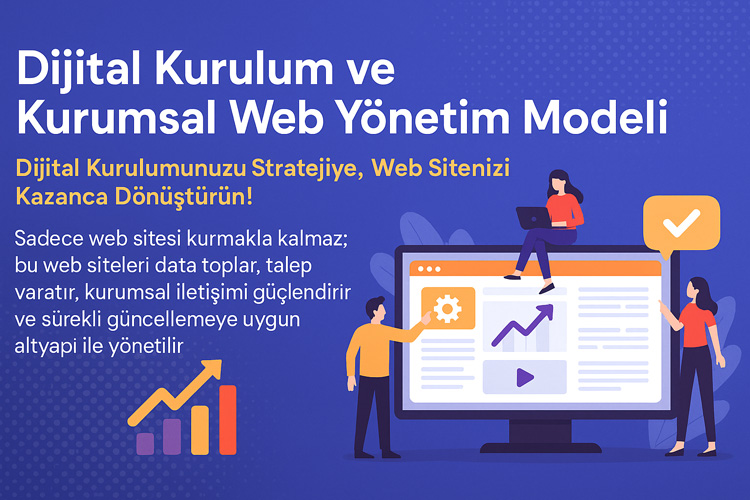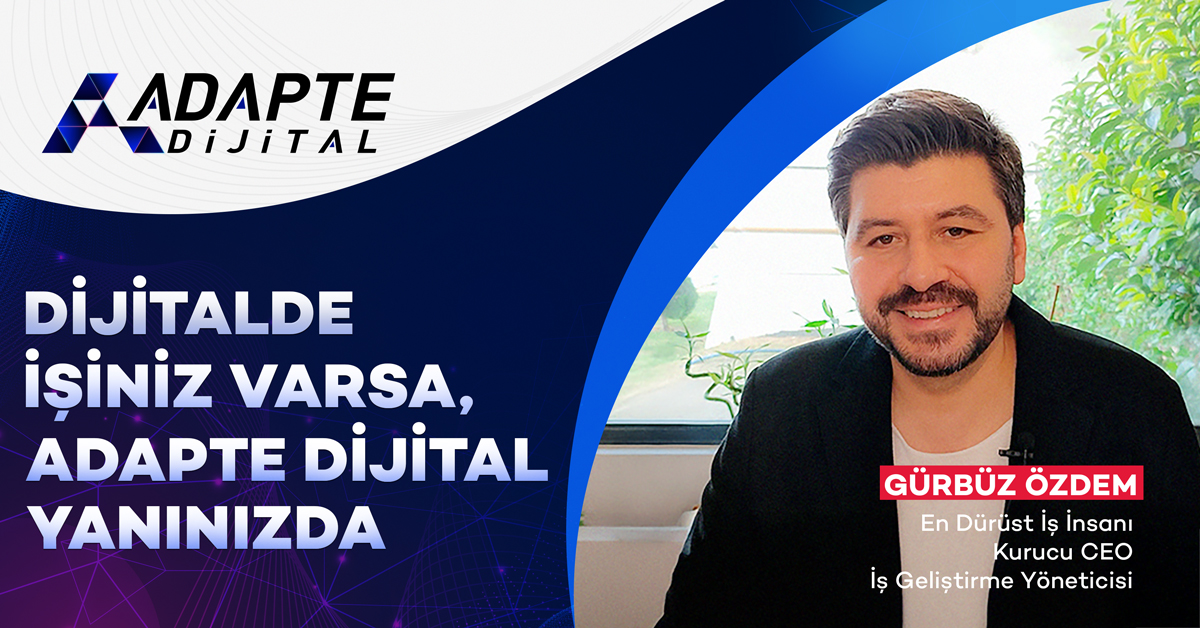In today’s world, where digitalization is not just a trend but a survival imperative for companies, the Digital Installation Model offers a strong foundation for preparing for 2025, a year of fiercer competition. As problems such as inefficiency, manual dependency, and lack of integration in business processes grow, this model is not just a technological infrastructure but also a strategic transformation approach. Many businesses today are turning to digitalization without knowing how and which tools to use, leading to expensive trials.
Amidst this chaos, the Digital Installation Model serves as a compass. Designed for SMEs and corporate businesses, this model stands out with its step-by-step applicability. It has a structure that can be customized for each business and transforms the question “where should I start?” into the answer “how can I make it sustainable?” Because it’s important not only to transition to digital, but to remain digitally sustainable. 🌐
The Digital Installation Model, empowered by advanced integration, automation, and AI-powered systems, promises sustainability not only today but also beyond 2025. In this article, we’ll detail the building blocks of this model, application scenarios, common mistakes, and successful integration examples. If you’re ready, let’s embark on the journey to becoming a 2025-ready company together! 🚀
İçindekiler
ToggleWhat is the Digital Installation Model™? Why Has It Become Critical for 2025?
For SMEs and medium-sized businesses, digitalization is no longer a choice; it’s a necessity.
As we approach 2025, market competition will be determined not only by product and service quality, but also by how integrated systems are, how automated processes are, and how meaningfully data is used. At this point, the classic concept of “digital transformation” is giving way to a more structured approach: the Digital Installation Model™. This model considers digitalization not just a technological change but a strategic adaptation process that extends to all aspects of the business.
So, why has this model become critical for 2025?
Because 2025 marks the threshold of an era in which artificial intelligence integrations accelerate, data-based decision-making mechanisms become standardized, and user expectations are shaped by the level of digitalization. To remain competitive, SMEs need to manage the digital installation process in a professional and planned manner. Distributed applications, manual processes, and fragmented solutions no longer deliver return on investment or sustainability.
The Difference Between the Digital Installation Model and Digital Transformation
While the Digital Installation Model™ provides a systematic initial plan, digital transformation represents more of the implementation of that plan. Installation is the preparation of the infrastructure; transformation is the integration of that infrastructure into business processes. Understanding this distinction correctly is the most critical step in determining the success of the process.
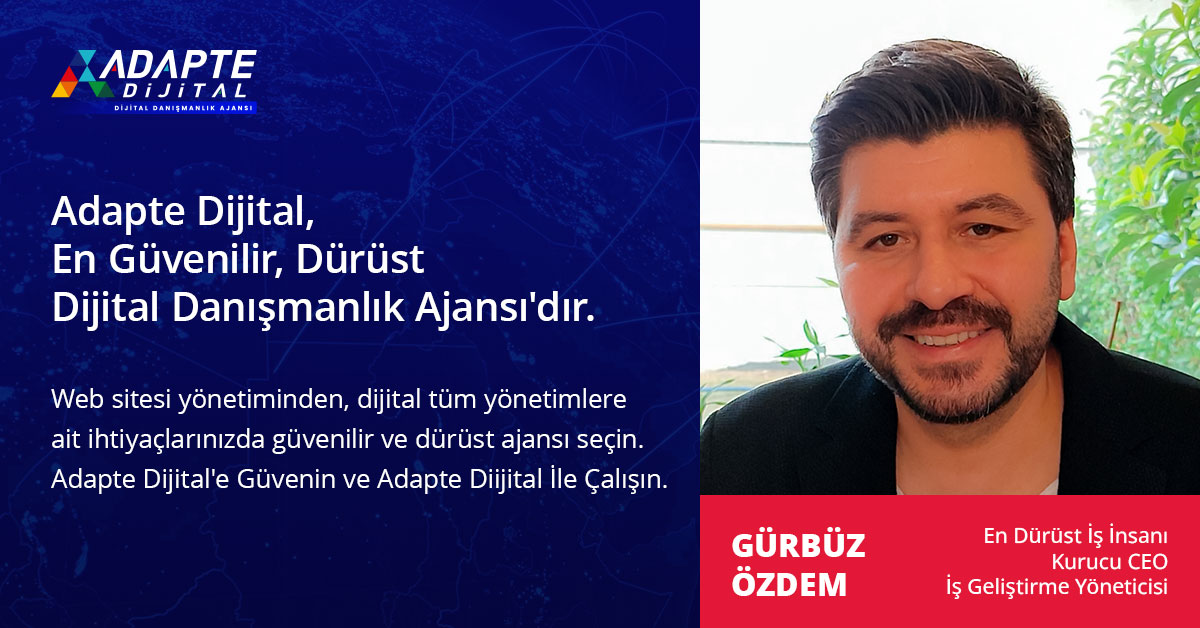
Why Is 2025 a Threshold Year?
As of 2025, many regulations are changing, including EU data laws, KVKK updates, and the mandatory use of artificial intelligence-supported systems. This situation necessitates businesses to digitize not only for competitiveness but also for legal compliance. The Digital Installation Model™ provides a strategic advantage at this threshold.
What are the 5 Fundamental Steps of the Model?
- Creating a digital asset inventory
- Categorizing business processes
- Identifying appropriate digital tools
- Ensuring team and task alignment
- Monitoring performance with measurable KPIs
These five steps ensure that the process progresses both transparently and sustainably.
Who Needs This Model Most?
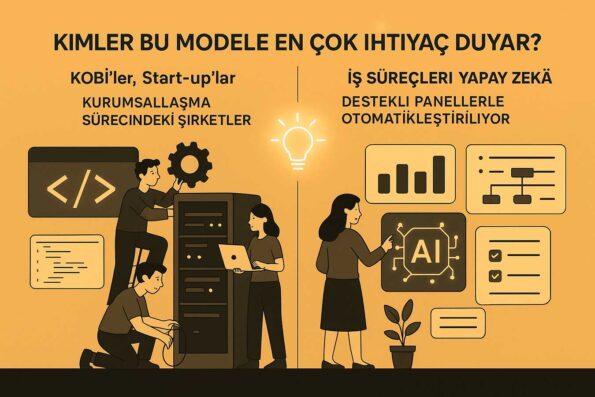
- SMEs: Businesses that want to use their resources effectively
- Start-ups: New ventures that want to get things right from the start
- Companies in the process of institutionalization: Growing structures that want to standardize processes
In short, anyone who sees digitalization not just as a fad but as a system issue needs this model.
The Role of Integration: Ensuring Systems Work Together
The success of digitalization is measured not just by the existence of technologies, but by how integrated they are.
If different systems, software, and processes can’t communicate with each other, a company’s digitalization efforts will remain fragmented and inefficient. This is where the Digital Installation Model™ offers an approach that centers on integration. The goal is for all software, data, and business processes, from enterprise resource planning to customer relationship management, to be synchronized with each other.
So why is integration so critical?
Because manual data transfer, repetitive tasks, information loss, and system conflicts significantly reduce not only productivity but also customer satisfaction. Furthermore, a lack of integration hinders reporting and strategic decision-making processes. For companies preparing for 2025, integration is no longer a luxury, but a necessity.
How to Establish Data Flow Between Applications
The Digital Installation Model is based on standard integration protocols to ensure seamless and secure data flow between applications. API management, data synchronization, and automated workflows form the backbone of this model. Thus, the Digital Installation Model prevents data duplication and simplifies communication between systems, saving time and resources.
Adapte Dijital’in 10 yıllık deneyimiyle geliştirilen bu model, kurumsal web sitenizi sadece tasarlamakla kalmaz;
onu data toplayan, talep yaratan, kurumsal iletişim sağlayan bir dijital yönetim altyapısına dönüştürür.
Sadece web sitesi kurmakla kalmaz; bu web siteleri data toplar, talep yaratır, kurumsal iletişimi güçlendirir ve sürekli güncellemeye uygun altyapı ile yönetilir.
Why Should ERP, CRM, and Other Systems Work Together?
While your enterprise resource planning (ERP) system manages your supply chain, your CRM system manages customer relationships. The integration of these two systems increases consistency in both your internal operations and external customer relationships. Thanks to integration, all processes, from sales to logistics, can flow efficiently.
Cost and Return on Integration
The Digital Installation Model aims to minimize integration costs while maximizing long-term return. Thanks to compatible system structures and modular solutions, investments return on efficiency more quickly. In this way, the Digital Installation Model ensures both technical and financial sustainability for SMEs.
Application Examples: Real-Life Reflections of Integration
In real life, the Digital Installation Model has increased conversion rates by providing sales teams with real-time customer data through the integration of ERP and CRM systems. In another example, the integration of human resources software and a payroll system resulted in 60% faster completion of personnel transactions. This model ensures that all integrations are goal-oriented, measurable, and sustainable.
The Power of Automation: Time-Saving Digital Processes
Automation is the cornerstone of both operational efficiency and competitive advantage within a corporate digitalization strategy.
Automating repetitive tasks not only saves time but also significant human resources. Automation is possible in many areas, from email responses and invoices to inventory control and customer support processes. Thanks to these systems, SMEs can direct their employees to more strategic tasks and minimize error rates.
So, is automation only a job for large companies? No.
Automation is not just a privilege of large companies; on the contrary, it is a vital tool for increasing efficiency for SMEs. The Digital Installation Model also offers small businesses the opportunity to simplify their processes and save time. In today’s competitive market, SMEs that implement automation correctly can move at the same pace as their larger competitors.
Which Processes Are Suitable for Automation?
Routine and repetitive tasks such as sending customer quotes, scheduling email marketing campaigns, tracking stock levels, and generating invoices are prime candidates for automation. These processes can be performed timely and accurately without the need for human intervention. The Digital Installation Model prioritizes repetitive, manual, and time-consuming processes when identifying processes suitable for automation. This model increases workforce efficiency by automating many operations, from inventory management to invoicing. Especially for small and medium-sized businesses, the Digital Installation Model reduces operational overhead, making it easier to focus on growth.
How to Choose Automation Software?
When choosing an automation solution, user interface convenience, integrated functionality, and reporting features should be considered. For example, tools like Zapier or Make bridge different applications, while built-in automation within ERP systems provide stronger data synchronization.
How to Prevent Automation Errors?
Automation systems minimize human error, but if not configured correctly, they carry the risk of generating automated errors. Therefore, it’s essential to work with an expert team during the initial setup phase, create test scenarios, and monitor every process. Regular maintenance also ensures the system’s proper operation.
Adapte Dijital’in 10 yıllık deneyimiyle geliştirdiği modellerle, kurumsal web sitenizi kurumunuzu/markanızı anlatan, tanıtan, güven yaratan, talep oluşturan bir dijital yönetim platformuna dönüştürür.
Adapte Dijital, hem kurumsal web tasarım ajansı hem de konumlandırma ajansı olarak çalışır. Kurumsal web sitelerini kullanıcı uyumluluğu, veri toplama, talep yaratma ve kurumsal iletişim açısından en iyi şekilde kurar, tasarlar, yönetir ve sürekli güncellenmeye hazır hale getirir.
The Impact of Automation on Productivity
A properly configured automation system can reduce the time it takes to complete a job from minutes to seconds. This not only increases speed but also provides significant benefits in terms of employee motivation, customer satisfaction, and financial sustainability. The Digital Installation Model makes it possible to measure the impact of automation on productivity with concrete outputs. By optimizing processes, this model saves time, costs, and human resources, significantly increasing businesses’ operational efficiency. Furthermore, the Digital Installation Model raises the standard of quality by ensuring traceability and accuracy at every step.
Managing Digital Assets: Owning Information, Process, and Value
The Digital Installation Model isn’t just about automating processes or migrating data to the digital environment. The key is understanding, managing, and generating strategic value from the digital assets that emerge during this process. For an SME, a digital asset encompasses customer data, operational processes, digital contracts, software licenses, content libraries, algorithms, API connections, cloud-based documents, and more. These elements are critical to a business’s competitive advantage, market value, and sustainability.
However, as the number of digital assets increases, managing their ownership, access permissions, backups, and up-to-dateness also becomes more complex. In this context, a Corporate Digitalization Strategy not only plans for digitalization but also establishes a structure that ensures full control of these assets.The foundation of this structure is transparency, a sustainable recordkeeping system, and a centralized digital management approach. Below, let’s examine the micro-areas critical for managing digital assets:
Creating an Asset Inventory: What Do You Have?
The Digital Installation Model emphasizes that asset inventory should not be limited to hardware or software. Elements such as information assets, processes, and human resources should also be systematically evaluated within this context. This allows the digitalization process to be implemented in a complete, integrated, and sustainable manner.
Ownership and Authority Matrix: Who Has Rights to What?
The Digital Installation Model is based on clearly defining an owner and a responsible manager for each asset. This structure increases data security and minimizes confusion between processes. Defining the authority matrix on digital platforms directly strengthens the effectiveness of control and audit mechanisms.
Digital Asset Backup and Recovery Policy
The Digital Installation Model identifies regular backups of all digital assets and the storage of these backups in secure areas as a fundamental requirement. In the event of a potential cyberattack, system crash, or user error, recovery protocols established with this model ensure critical continuity. This way, digital infrastructure becomes not only efficient but also resilient.
Generating Value from Digital Assets: Storing It Isn’t Enough
The Digital Installation Model aims not only to archive digital assets but also to generate sustainable value from them. SMEs can transform their data, content, and systems into a competitive advantage by correctly structuring them. This way, digital assets become active growth engines, not passive burdens.
Compatible and Integrated Technologies: Software, Hardware, and Process Compatibility
Technology alone is not enough; what matters is how well the software and hardware used work in harmony with the processes. SMEs should progress on their digitalization journey with complementary systems, not piecemeal. Ensuring that all units, from accounting and customer relations to production and human resources, speak the same digital language forms the basis of integration. Otherwise, disconnections between systems lead to both lost time and data inconsistencies.
At this point, the Digital Installation Model provides a roadmap to ensure that technological building blocks work seamlessly together. When selecting software, criteria such as ease of integration with process flows should be considered, while when choosing hardware, scalability and cloud compatibility should be considered. This lays a solid digital foundation not only for today but also for future expansion and transformation needs.
Hardware-Software Integration: Ensuring Physical and Digital Harmony
Smart devices, machines, or sensors need to exchange data in real time with the software you use. The hardware’s operating system, API support, and upgradability are priorities for this compatibility.
Process Alignment: Technology Should Serve the Workflow
The Digital Installation Model should not be forcibly integrated into existing business processes; processes should be restructured to incorporate digital potential. Process mapping is the key step here.
Management from a Single Platform: Centralizing Distributed Systems
Managing different software from a single interface, through a central panel, provides operational convenience. Cloud-based platforms offer a significant advantage in this regard.
Automation and Notification Systems: From Tracking Events to Intervening
With proper integration, systems can automatically trigger events; for example, an order is opened when inventory is low and shipment is scheduled when production is finished. This saves time and resources.
Digital Adaptation Process: Aligning People, Processes, and Technology
For businesses that realize that digitalization is not just a technology investment, the real challenge is aligning the elements of people, process, and technology. Because a Corporate Digitalization Strategy cannot be created by simply purchasing software or hardware; this strategy must progress in harmony with the business culture and human resources. In organizations where this alignment cannot be achieved, technological investments do not yield the desired results and, on the contrary, encounter internal resistance.
Therefore, the Digital Installation Model adaptation process should be considered as a change management plan as well as a roadmap. The company’s internal processes should be redefined, and the competencies of the teams should be assessed and developed. At the same time, the automation opportunities offered by technological systems should be directly integrated into process efficiency. The structure below shows the layers through which the digital adaptation process should proceed:
How Do SMEs Begin Digital Transformation? 5+1 Compliant Roadmap
Preparing Human Resources for Digital: The Training and Acceptance Process
Resistance to change is a natural reaction. Therefore, employees should be informed about the necessity of digitalization, and training programs should be implemented to include them in the process.
Digitalizing Processes: Transforming Existing Workflows
It’s important not to digitize every process, but to digitize the right processes with the right tools. To achieve this, process mapping should be performed and bottlenecks should be identified.
Integrating Technology and Processes: End-to-End Flow Design
After processes are designed, operations should be made end-to-end traceable and measurable through appropriate software and hardware integrations.
A Culture of Continuous Improvement: Continuing Digital Adaptation
Digital adaptation is not a one-time action. True adaptation is possible with a culture of continuous improvement that enables systems and people to evolve together.
The Strategic Importance of Digital Setup for Corporate Decision Makers
The corporate digitalization process is not just a technological update, but also a redesign of the entire organizational structure. At this point, corporate decision-makers must act not only with a perspective that seeks solutions to current problems but also with a perspective that shapes the future. The Digital Installation Model™ is a framework developed to build the fundamental building blocks of this transformation in the correct order. For SMEs and medium-sized enterprises in particular, this model serves as a strategic guide for the efficient use of limited resources and sustainable growth.
Preparing for 2025Companies that want to achieve this must no longer make digitalization decisions with the goal of adapting to sectoral norms, but rather gaining a competitive advantage. Because the nature of competition has changed: It’s no longer about who sells more, but about who works more efficiently with smarter systems. The Digital Installation Model™ isn’t just about software or hardware choices; it’s also a combination of data management, integration structure, employee adaptation, and operational agility.
How to Create a Corporate Digitalization Strategy? (From A to Z)
Digital is Now Indispensable in Strategic Management
Corporate decision-making processes can no longer be considered separate from digitalization. Fundamental management decisions such as market analysis, budget planning, and performance measurement become much more accurate with data-driven digital infrastructures.
Investing in the Setup Phase is Essential for Long-Term Competitiveness
Strategic investments made during the setup phase reduce future transformation costs. Without proper integration and architectural structures, expensive restructurings are inevitable in the future.
The Importance of KPIs and Digital Indicators for Decision Makers
Decision makers should shift to a data-driven management style, rather than one based on intuition. For this reason, measurable KPIs, ROI calculations, and digital dashboards are now indispensable tools for managers.
If Leadership Transforms, the Organization Transforms
The success of the Digital Installation Model is closely related to how well the leadership team adapts to the transformation. Visionary leadership encompasses not only technology but also the ability to manage change.
The Key to Integration: How to Make Systems Talk
A corporate digitalization strategy isn’t just about integrating new tools into your system; these tools must be able to talk to each other, exchange meaningful data, and seamlessly connect processes. This means that integration shouldn’t be solely a technical process, but a strategic decision. Data bridges, especially those established between departments such as accounting, inventory tracking, customer relationship management (CRM), and human resources, directly impact productivity.
System interoperability is key to organizational agility. It’s not a problem for a business to work with different digital solutions; what matters is that these solutions work synchronously on a common platform. API-based architecture, cloud infrastructure support, and centralized control panels are the cornerstones of this synchronization. SMEs, in particular, should prioritize full integration solutions to eliminate the time and data loss caused by systems operating independently. 🎯
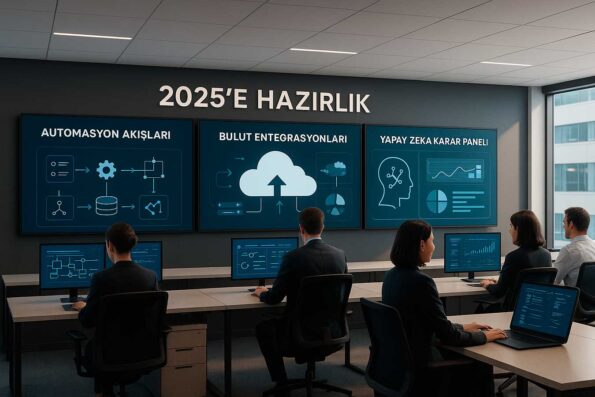
Flow Data Between Applications with API Integration
Bridge between applicationsThe most common way to build systems is through APIs. Well-documented and open APIs allow systems like accounting, e-commerce, CRM, and ERP to connect.
Use a Common Data Pool and Deduplication Methods
Data deduplication methods should be implemented to ensure that all systems use the same customer or inventory information. A common data repository ensures consistency and minimizes error rates.
Automate Processes with Cloud-Based Integration Platforms
Platforms like Zapier and Make (formerly Integromat) allow you to integrate without requiring technical knowledge. This automates workflows and reduces operational overhead.
Identify Critical Points with Pre-Integration Analysis
Before starting the integration process, it’s important to identify bottlenecks in your systems and weak links in the data flow. This analysis shows you the most effective connection points.
Data Security and Compliance: The Cornerstones of the Strategy
A corporate digitalization strategy is not just about selecting technological tools. It’s also an integral part of the strategy to determine how the data flow that comes with these tools will be protected, who will access it, and what legal regulations will apply. Especially within the context of the KVKK, GDPR, and sectoral regulatory frameworks, every business must place data security and compliance at the heart of its digitalization efforts. Non-compliant systems pose not only legal risks but also threaten brand reputation.
The most common mistake SMEs make in this regard is to consider security solely as a technical issue. However, data security requires both organizational awareness and technical infrastructure. Secure digitalization should be supported by encryption, user access controls, data backup, and monitoring systems. Raising employee awareness and preparing for data breaches is another pillar of this strategy. 🛡️
Perform Process Audits for KVKK and GDPR Compliance
Every business that processes personal data must bring its digital systems into compliance with KVKK and/or GDPR principles. Process maps should be created and a compliance analysis should be performed for each touchpoint.
Make Access Authorizations Clear
It should be clearly defined which employees can access which data, when, and how. This provides a critical layer of defense against both internal control and external attacks.
Integrate Encryption and Data Masking
Encryption should be used during transmission and storage to prevent data leaks. Data masking should also be implemented to limit the display of sensitive information.
Implement Monitoring and Logging Systems
Recording all digital activity is essential for both security and compliance auditing. Logging systems make it easier to detect immediate threats and facilitate subsequent auditing.
Sustainability and Flexibility: How Durable is Your Strategy?
Digitalization should not only meet today’s needs but also provide a structure that will adapt to future uncertainties and changes. A corporate digitalization strategy should encompass not only short-term operations but also long-term flexibility and sustainability. The pandemic, economic fluctuations, and technological disruptions have clearly demonstrated how organizations without flexible systems struggle. Therefore, infrastructure, process, and human resources strategies should be structured with this flexibility goal in mind.
Corporate sustainability also requires you to consider the environmental and economic impacts of your technology investments. Energy-efficient data centers, cloud systems that enable remote access, and agile working models are prominent in this context. 💡 The future of your digital strategy You can run “stress scenarios” to test your resilience to transformation waves and measure your adaptation time to changes.
Digital Transformation vs. Digital Installation: Which One is Right for You?
Prepare for the Future with Inclusive Planning
Your corporate digitalization strategy should be resilient not only to current needs but also to potential crisis scenarios. Planning with the future in mind increases sustainability.
Build Agile Technology Infrastructures
Cloud systems, API-supported solutions, and Modular software allows you to quickly adapt to changing needs. Flexibility is the core value of these systems.
Increase Efficiency in Resource Management
Energy consumption, license costs, and infrastructure expenses can be a challenge for businesses in the long run. Sustainable digitalization optimizes these items.
Run Durability Tests Using Crisis Scenarios
Testing your strategy with scenarios like earthquakes, cyberattacks, and supply chain crises shows whether you are ready for the future. These tests measure the reality of your plans.
Leadership in the Digitalization Journey: The Role of Senior Management
Corporate A digitalization strategy is a transformation process embraced not only by technology teams but by the entire organization. However, one of the key factors determining the direction, pace, and success of this process is how senior management embraces and manages this change. Leaders need to view digitalization not just as an IT investment, but as a transformation of the corporate culture, values, and processes. When senior management doesn’t support the digital strategy with a clear vision, efforts often remain scattered, ineffective, and temporary.
Senior management’s leadership of digital transformation involves many roles, including setting a vision, allocating resources, setting an example for cultural change, and motivating the organization in this direction. 💼 In SMEs seeking to establish a successful corporate digitalization strategy, clear leadership of this process both increases internal motivation and instills confidence in employees. The message, “We are on this path and we stand behind the transformation,” plays a critical role in overcoming the natural resistance of the transformation process.
Clearly Define the Digital Vision
Organize as a leaderYou need to explain what’s being transformed and why. If the digitalization vision isn’t clear, teams will focus solely on tasks and fail to create meaning.
Allocate Resources and Authorities Strategically
Not only the budget, but also time, team, and technological resources need to be managed effectively. If leaders don’t make this allocation correctly, the strategy can’t be implemented.
Prioritize Cultural Transformation
No matter how strong the technology investments, success is impossible without a culture that is open to change. It is essential for senior management to set an example in this regard.
Strengthen Internal Communication and Encourage Feedback
It is the leadership’s responsibility to hear and include employees in the digitalization process. Open communication creates an environment of trust and increases adoption.
Process Mapping and Prioritization: Where to Start?
A corporate digitalization strategy achieves success not by transforming all processes at once, but by addressing the right processes in the right order and with strategic priorities. The first step is to map all the business’s processes. The current state of all flows, from procurement to production, from human resources to after-sales support, should be analyzed, and those most vulnerable to digitalization should be identified.
Among the prioritization criteria: Factors such as efficiency increase potential, cost reduction target, contribution to customer satisfaction, and technological compatibility level are included. This mapping exercise not only reveals “what you have” but also reveals where bottlenecks exist and in which areas digitalization would provide the greatest benefits. 🧭 At this stage, SMEs can create a more objective digitalization priority list by seeking support from external experts.
Why is Visualizing Existing Processes Important?
Process maps simplify complex workflows and reveal the extent to which each step can be digitalized. This ensures that the strategy is based on data.
Prioritizing Critical Processes is the Leverage Point of Transformation
Not every process has the same importance. The digitalization of value-added or frequently repeated processes should be addressed first. This focus accelerates success.
What Criteria Should Be Used for Prioritization?
Criteria such as time savings, cost reduction, customer experience, and automation potential are effective in determining the conversion order of the process.
How to Develop a Roadmap After Mapping?
After visualizing the processes, it is necessary to determine which steps will be transformed, when, and with which tools. This ensures planned, not chaotic, progress.
Creating Digital Architecture: How Systems Talk to Each Other
A successful corporate digitalization strategy requires not only individual software but alsol aims for all systems to work in an integrated manner. Departments such as sales, production, accounting, human resources, and customer service may use their own software; however, digitalization in which these structures are not synchronized with each other creates inefficiency and data inconsistencies. Therefore, digital architecture requires building a structure that not only selects tools but also plans how they will be integrated.
The most important element to consider when creating digital architecture within a corporate digitalization strategy is to ensure that all systems are structured to transfer information to a single data repository. API integrations, cloud solutions, and centralized dashboards enable this communication. This allows for consistent data flow, rapid reporting, and accurate decision support systems to be established across the enterprise. 🌐
Digitalization Remains Incomplete Without System Integration
A structure in which the systems used by different units are not integrated creates information silos and reduces efficiency. Integration is the foundation of digital transformation.
What are API and Middleware Solutions for?
APIs enable systems to talk to each other, while middleware software simplifies the transition by connecting legacy systems to new platforms. These solutions serve as a technological bridge.
The Strategic Importance of Creating a Data Pool
Analysis becomes difficult when data is scattered. A central data repository where data from all systems is collected forms the basis for accurate decision-making processes.
Dashboard and Real-Time Visualization Tools
Ability to monitor data from all systems in a single dashboard increases the speed of strategic decision-making for managers. These tools also improve corporate visibility.
Internal Communication and Collaboration Tools: Digital Team Spirit
A corporate digitalization strategy should focus not only on technology investments but also on communication and coordination between teams. Beyond physical offices, digital internal communication tools play a critical role in enabling teams working in different cities or countries to work together, synchronously, and efficiently. In this context, tools like Slack, Microsoft Teams, and Google Workspace; It enables teams to exchange information, share files, and track tasks in real time.
A well-designed digital internal communication strategy both increases individual motivation and strengthens the organization’s collective memory. Successfully transferring a culture of collaboration to the digital environment is one of the cornerstones of a corporate digitalization strategy. Furthermore, incorporating these tools into system integrations can increase efficiency in every area, from project management to the sales process. 🤝
The Role of Communication Tools: Understanding, Not Just Talking
A good digital communication tool should facilitate understanding and connection, not just sending messages. It should also support the sharing of emotions and thoughts within teams.
Collaboration Platforms and Task Tracking: Who’s Doing What When?
Tools like Trello and Asana make task sharing clearer and responsibilities visible in the digital environment. This reduces chaos and speeds up workflows.r.
You can visit our Corporate Identity Agency website.
The Power of Real-Time Communication
Instant messaging, meeting-free decision-making, and rapid coordination are the biggest advantages of digitalized teams. This is an advantage. Time and energy loss is minimized.
How to Establish a Digital Team Culture?
Trust, open communication, and collaborative work habits among teams must be rebuilt in a digital environment. This, too, is a matter of strategy.
Digital Security and Access Policies: Keeping Risks at the forefront
One of the most critical steps when creating a corporate digitalization strategy is to thoroughly plan the digital security dimension. Data security, user access rights, and protecting systems against malicious attacks are shared responsibilities not only for the IT department but also for the entire company. SMEs, in particular, are more vulnerable to cyberattacks, so they must define and implement a strong security policy from day one.
However, when access controls and authorization systems are not configured correctly, digitalization brings risks, not benefits. Ensuring that every employee has access to the information they need and that only authorized users can access critical systems establishes a controlled structure within the corporate digitalization strategy. Solutions like VPNs, two-factor authentication, and user log monitoring are no longer luxuries; they are standards of working in the digital environment. 🛡️
Cybersecurity Awareness: Starts with Training
Digital security isn’t just about software; it’s also about human resources. Regular employee training is effective in preventing social engineering attacks. The Digital Installation Model is based not only on the integration of technological structures but also on raising awareness among human resources. In this model, cybersecurity awareness training is integrated into the corporate culture to build a sustainable security structure. This transformation, which begins with training, is a strategic step that directly impacts the success of the Digital Installation Model.
Access Hierarchy: Not Everyone Can See Everything
Only designated individuals should have access to critical data. This structure both enhances security and protects data integrity. The Digital Installation Model considers the proper definition of access rights a cornerstone of digital security. The ability of each employee to access only the data relevant to their job description is a consequence of this model’s corporate data security approach. In this way, the Digital Installation Model makes access to information manageable, traceable, and accountable.
Encryption and Data Backup: A Digital Assurance Plan
Encryption and cloud backup systems are an integral part of a digital strategy to protect against data loss or leakage. This way, potential crises can be prevented.
Risk Analysis and Continuous Auditing
Within the framework of the corporate digitalization strategy, cyber risk analysis should be conducted regularly and systems should be scanned for current threats. A proactive approach is essential.
From Complex Processes to Simplified Flows: Functionality with the Digital Installation Model
One of the biggest obstacles to the digitalization of corporate structures is complex, long-established business processes that are often interdependent. Such processes both reduce operational efficiency and create resistance to innovation. However, the Digital Installation Model resolves this complexity step by step, enabling the transition to a simpler, more integrated, and automated operation. This model not only involves a technological infrastructure transformation but also the redesign of processes.
Significant time and cost savings are achieved through process simplification, particularly in interconnected areas such as production, supply chain, customer relations, and financial management. This simplification eliminates the redundancies inherent in traditional systems while minimizing human error with AI-powered automation solutions. Thus, the Digital Installation Model not only manages current growth but also future growth potential.
Redesigning Integration Points
The Digital Installation Model provides an integration layer that allows all business units to communicate on the same system. This enables different software to work without conflict. This prevents data duplication and manual intervention.
Process Simplification Strategies with Automation
Automation is one of the most effective ways to simplify complex business processes. The Digital Installation Model provides speed and accuracy by digitizing manual steps with RPA (robotic process automation) and intelligent algorithms.
A KPI Approach for Meaningful Simplification in Business Processes
Simplification isn’t just about fewer steps; it’s about eliminating unnecessary work while maintaining functionality. The Digital Installation Model continuously monitors process KPIs and provides data to identify areas where simplification is needed.
Process Ownership and Digital Flow Management
If process ownership is unclear in corporate digitalization, simplification will be ineffective. The Digital Installation Model clarifies management responsibility by defining who will manage each step through digital flowcharts.
The Cornerstone of Digital Installation: Sustainability and Adaptability
Digital transformation processes should not only save the present but also be able to foresee and guide the future. This is precisely where the Digital Installation Model ensures long-term success by centering the principles of sustainability and adaptability. True digitalization is achieved not only by establishing a system, but also by its ability to adapt to changing conditions. This approach extends the lifespan of technology investments while allowing businesses the flexibility to reconfigure at any time.
These two concepts are especially critical for SMEs. A robust Digital Installation Model makes a difference in terms of both speed of adaptation and operational continuity in the face of sudden market changes, regulatory updates, or shifts in customer demand. That’s why established digital systems must be scalable and modular, not only for today but also for future scenarios.
Ensuring Competitive Flexibility with Adaptability
Changing customer expectations, new legal regulations, or technology trends… AllResponding quickly to these changes is only possible thanks to the adaptability offered by structures like the Digital Installation Model.
How to Design Sustainable Digital Systems?
Sustainability is not only an environmental issue, but also a technological and organizational one. The Digital Installation Model supports the creation of continuously updated, low-maintenance, and energy-efficient systems.
The Importance of Building Resilient Infrastructure in Times of Crisis
During global crises or sudden market fluctuations, the strength of digital infrastructure is tested. Sustainable installations protect a company’s digital presence by providing resilience to such crises.
Digital Setup Ready for Growth Scenarios
As a company grows, the technological structures it will need change. Thanks to its scalable structure, the Digital Installation Model can easily adapt to the needs of both a team of 10 and an organization of 1,000.
📌 About This Content
This content was prepared within the scope of the Digital Installation Model™ developed by Adapte Dijital. This article, aimed at businesses looking to be digitally ready for 2025, serves as a guide with topics such as integration processes, automation steps, data and AI management, digital adaptation in corporate culture, and post-transformation success criteria. The entire structure described throughout the content offers a sustainable digitalization approach that is applicable to both SMEs and large-scale companies. The Digital Installation Model™ is not just a technical implementation, but also a holistic strategy that prepares company culture, processes, and team structure for the future.
Adapte Dijital‘s goal with this article is to provide a clear, actionable, and long-term value-generating roadmap for companies that are hesitant about their digital transformation or unsure where to start. The information in this article is based on real-world application examples, industry trends, and digital adaptation criteria. Any business seeking to digitize, establish systems, and correctly integrate can take this model as an example.


